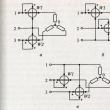|
The higher the profit from a product, the more profitable it is to sell it. But this is only at first glance. For inexpensive goods that do not provide tangible benefits, there should also be a place in the window. How to choose an assortment of an online store, taking into account the price of products and increase sales using low-margin products, was described in the article. Why high margins are not always profitableDifferent products in the store bring different profits. At the same time, expensive goods are not always the most profitable, and the cheapest are not always the most unprofitable. Let's figure out why. The profit from a specific product is called a margin - this is what you get your hands on after you subtract the costs for it from the price of the sold product: cost price, delivery, storage and others. For example, you bought a chair for 2000 rubles, brought it to the warehouse for 200, delivered it to the buyer for 300. And its cost in your store is 5000 rubles. In this case, the margin will be 5000-2000-200-300 = 2500 rubles. The margin depends on the markup: the higher the latter, the more you earn. All goods, taking into account the profit they bring, are divided into three groups: - low margin- usually these are inexpensive and everyday goods such as hygiene products, underwear, household chemicals, baby food, and accessories. The margin for them does not exceed 20% of the costs.
- average margin- Secondary products such as wine, seafood, cheeses, electronics, building materials. The mark-up for such goods is from 50% of the costs.
- high-margin- expensive and exclusive goods, for example: branded items, gold jewelry, flowers. Such goods are not purchased every day, but they pay off thanks to the mark-up, which, as a rule, exceeds 100%.
Margin - the amount of net profit after the sale of goods High product margins do not mean that the store will be profitable. For example, if a product with a high mark-up is bought too rarely, the seller goes bankrupt faster than gains. At the same time, low-margin products can generate high monthly profits due to high turnover - if they are bought frequently and in large quantities. The assortment of the store should contain goods that differ in price and profitability. The pricing policy of the store is based on the target audience, competitors' prices and other factors. How to choose an assortment taking into account the price of goodsWe divide the assortment into price segmentsIn order for the store to be profitable, it is necessary to select the right products in terms of margin and set prices that will be profitable for the store and attractive to customers. At the same time, the buyer must have a choice: if he sees only cheap or expensive goods in the store, then it is more difficult for him to choose, and sales will fall. Products inside the online store are divided into categories. For example, let's say you sell hair care products. So, the categories will be shampoos, conditioners, balms, sprays. Each category includes several products ranging from cheaper to more expensive. To identify the optimal price for goods, you need: - Determine the minimum and maximum price of goods for each category
The minimum price is the minimum that a product can cost in the store, and the maximum is the maximum of its cost. This is necessary in order to understand in what range the prices for your goods will be. To understand the range of prices in a particular store, they are guided by the cost of goods from the supplier, the prices of competitors and the target audience. For example, you are selling black chairs. The cheapest one costs 1,500 rubles, the most expensive - 30,000 rubles. These figures will be the minimum and maximum prices. - Divide products into segments
Products in each category are divided into three segments: low, medium, high. Low-end products will have low margins, are inexpensive and generate little profit. Mid- to high-end products generate more revenue. However, for a wide assortment and choice at a price, you need both. So, your chairs cost from 1,500 to 30,000 rubles. This means that in your store, the low price segment is goods from 1,500 to 10,000 rubles, the middle price segment is from 10,000 to 20,000 rubles, and the high price segment is goods more expensive than 20,000 rubles.
Even if you are targeting only a narrow target audience, your store should still have products of different prices, not just cheap or expensive ones, and not products of approximately the same price. This allows you to provide customers with a wider choice and satisfy a larger number of requests. 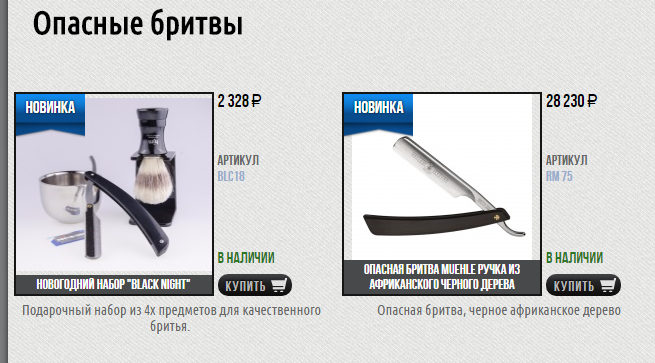
The increase in price must correspond to the increase in the quality of the goods - when buying a more expensive item, the buyer must be sure of its quality. You shouldn't put the same price on goods of different quality, this reduces loyalty. The minimum and maximum price of goods, as well as the share of goods in each segment in the assortment, depends on the price positioning of the store, that is, on the price segment in which it operates. Choosing a price niche with an eye on competitorsTo understand whether there should be more expensive or cheap goods, it is necessary to decide in which price segment the store will operate: inexpensive, medium, premium segment. For example, an inexpensive sofa store will not have luxury furniture made from rare materials. But if the store positions itself as a store of elite exclusive sofas, then the prices for furniture in it are several times higher, and the assortment is different. At the same time, a sofa from a stock can cost 4,000 or 18,000 rubles, and an elite sofa can cost 85,000 or 250,000 rubles. This price range expands the choice for buyers, and helps the store expand its audience: the expensive one will cover not only people with very high incomes, but also people with an income above average. And the stock - not only of those with a very low income, but also of those with an income above the average. According to how the cost of goods relates to the prices of competitors in the market, there are three types of stores. - Discount store
In such stores, the minimum and maximum prices are lower than the corresponding prices of competitors. The audience is people with low and lower middle income. Product ratio: - 50% low segment;
- 30% of average value goods;
- 20% high segment.
- Mid-priced store
The cost of goods does not differ from similar items from competitors. The audience is people with average and above average income. Product ratio: - 40% low segment.
- 40% middle segment.
- 20% high segment.
- Premium segment store
The minimum and maximum prices for goods are higher than those of competitors. Position: "Quality cannot be cheap." Target audience - people with high and above average income. Product ratio: - 20-30% of goods are inexpensive;
- 30-40% of the average cost;
- 20-40% of expensive goods;
- 10% of premium goods are very expensive.
For example, you have a discounter with a minimum price for goods of 100 rubles, and a maximum price of 10,000. This means that 50% of the goods in the assortment cost from 100 rubles to 2000 rubles, 30% cost from 2000 to 8000 rubles and another 20% are the most expensive items from 8,000 to 10,000 rubles. Or you have an elite clothing boutique with price tags ranging from 15,000 to 90,000 rubles. This means you have 20% of items with a price of 15,000-25,000, 30% with a price of 25,000-45,000, 30% with a price of 45,000-80,000, and 10% of premium items with a price over 80,000. It turns out that for the correct distribution of assortment goods by price, you need: - understand in which price segment your store operates;
- highlight separate product categories;
- make sure that each has the right percentage of inexpensive, medium and expensive goods.
Price segmentation is needed not only so that as many customers as possible find a suitable product in your store. It helps to get the maximum profit from the goods. With incorrect segmentation, you can make mistakes like this: - An excess of expensive or cheap positions in each category of products of the online store.
- Overestimation or understatement of the maximum or minimum price of goods in each category.
Let's take a look at examples. - There are too many inexpensive items in the store
For example, you have a sofas discounter, you sell almost all sofas for 5,000 rubles. Firstly, it negatively affects the image - it seems to buyers that you only have low quality furniture. Secondly, the margin from such sofas is small, and even with a large number of sales, the final profit will be low. And thirdly, you attract only an audience with a very low income, and you miss out on people with a slightly lower average income who are ready to pay 15,000-20,000 rubles for a sofa. - There are too many expensive items in the store
Having only excessively expensive items will scare off middle-class people who might also be your customers. This can lead to a decrease in the number of sales. For example, all your sofas cost from 200,000 rubles, the margin is high. But the segment of buyers willing to buy such furniture is very narrow, sofas are rarely bought, the store is unprofitable. And if you add furniture to the store in the price range from 80,000 to 200,000, then you can attract people with an income above the average and increase sales.
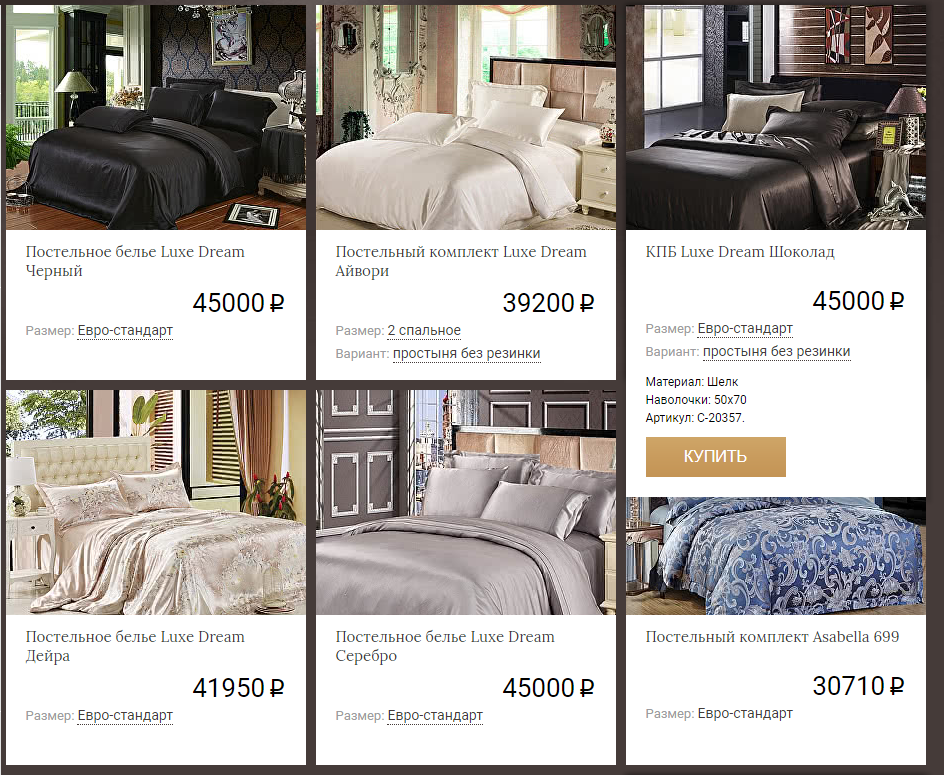
All products are equally expensive - this reduces the choice for the buyer - Overestimation or understatement of the maximum or minimum price
When prices are overstated, especially the maximum ones, the competitiveness of the store decreases. Customers go shopping elsewhere. For example, everywhere a laptop of this model costs 35,000 rubles, and you bet 65,000 rubles. Buyers have no reason to overpay twice. And with the price of goods much lower than the market price, you will remain at a loss, because the margin will decrease. You can determine the minimum and maximum prices for products in a category by analyzing the prices of competitors. It is logical to make a very high markup when the buyer is ready to pay for the brand, you sell a unique thing that has no analogues on the market, your store is special and customers choose it, regardless of the prices.
We form an assortment by product groups based on demandWhen forming the assortment, not only the price itself is taken into account, but also the demand of buyers. Therefore, the store should have the following product groups: - Priority goods- should account for approximately 20% of all goods. These are goods with a large margin, high-margin, which are bought quite often. For example, for a grocery store, these are alcohol, delicacies, sausages, coffee. For an outerwear store, these can be designer coats.
- Basic Products- 40-60% of the assortment. Products in this category are bought the most and in large quantities. These are more often low-margin or medium-margin products, but with a high turnover. For example, in a grocery store, it is bread or pasta. Basic T-shirts in the clothing store. They are usually profitable, but not the biggest. However, some build on such products almost all of their assortment, for example, stores of Chinese goods. Huge turnovers allow you to get enough profit with a small margin.
- Seasonal- up to 20%. Those goods that are bought from time to time during the season. The proceeds from their profits are only available at certain times. For example, in a butcher shop in the summer you can sell kebab kits. And in the cosmetics store in the summer there is a wider range of sunscreens. With the help of these products, they attract additional buyers during the seasonal peaks and gain the loyalty of regular customers - they can purchase something they need in the season along with what they usually buy from you.
- Other goods- up to 20%. These are low-margin products that are needed for the convenience of customers, the uniqueness of the assortment and other purposes.
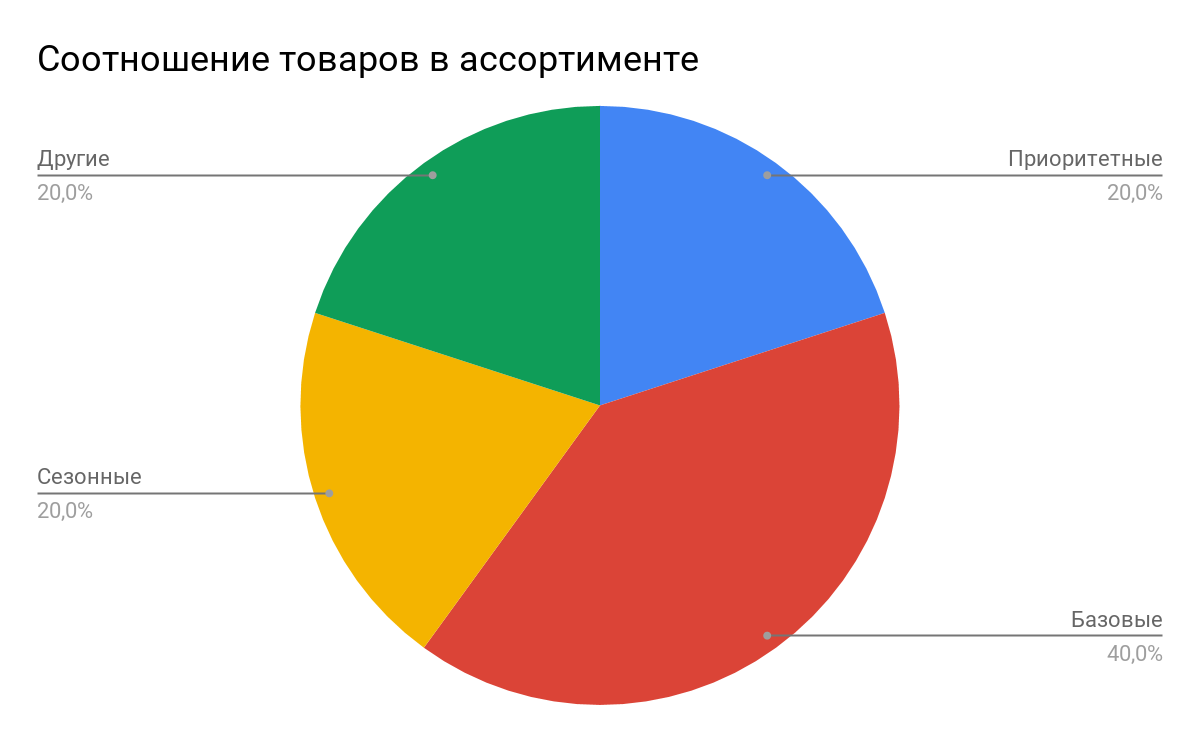
As a rule, a store has products with a high sales rate but a small margin, and products with a low sales rate but a high margin. This distribution of goods helps maintain a balance between what customers want to see in the store and what benefits the store. How Low Margin Products Can Help Boost SalesEven if your online store strategy is not based on selling a large number of low-cost products with high turnover, low-margin products should still be included in the product matrix. They serve several functions and indirectly increase revenue. - Low Margin Products Affect Buyers' Choices
Imagine that you come to a store and see sofas for 5,000, 12,000 and 25,000 rubles. You think that a sofa for 5,000 is too cheap and will break down quickly, for a sofa for 25,000 rubles you may feel sorry for the money. But the sofa for 12,000 looks like the best solution. At the same time, if there was no sofa for 5,000 rubles, you could leave the store, since the sofa for 12,000 could not be compared with anything, the price could seem high. I refuse to buy the cheapest goods, buyers choose and purchase goods from the middle price segment, the margin for which is already profitable. - Low-margin products can be a highlight of the store
Non-margin products are sometimes used to stand out among similar stores, to attract interest. For example, in one online gourmet store, you can additionally buy tea by weight, but not in another. Tea may not give the store any profit, but when choosing a place of purchase, the buyer pays attention to this. Purchases are made more often, which means that the total profit grows. - Low-margin products can shop more conveniently
Customer convenience is achieved by selling additional items that are needed to use the main purchase. For example: shoe care products for leather shoes or phone cases. The buyer does not need to go elsewhere to pick up accessories for the purchased item. This is how you kill two birds with one stone: you can increase the average check and make the interaction with the store more comfortable.
4 Ways to Increase Profits with Low-Margin ProductsYou can use low-margin products to increase your store's total revenue and boost sales of high-margin products. We know 4 ways to do this. - Increase your purchase volume and average check by upselling
Offer customers additional items to purchase. For example, show a separate block "Buy with this item" or "You might like it" in the basket or in the product card. The call center operator can also offer additional products during the call to confirm the order. For example, if a customer forgot to pick up a cover and a protective glass for a smartphone, you should tell him about the available positions, help him choose the price and color. 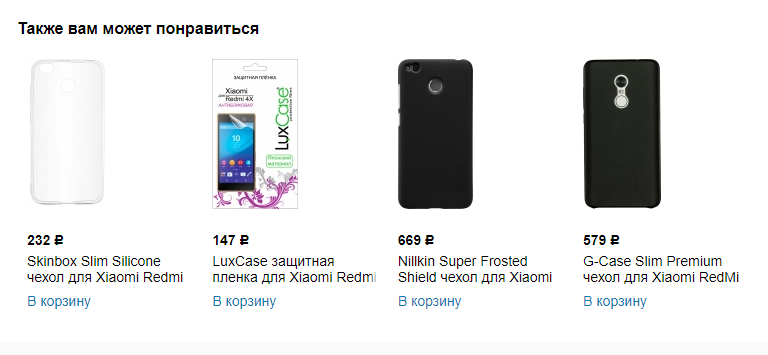
- Identify catalyst products
There are categories of low-margin products that are in demand and can attract buyers. And together with them, you can sell products that have a higher margin - starting with an inexpensive product, customers are more willing to add more expensive items to the cart. For example, plant seeds themselves are inexpensive. But if buyers are purposefully looking for them, they will come to the store. And then order, along with the seeds, soil, fertilizers and other goods necessary for giving and growing plants. You can find out what products-catalysts are in your online store using the analytics systems Google Analytics or Yandex.Metrica. Based on their data, you can see the path of the buyer through the site before buying: what products he viewed, in what order, and so on. - Sell in small wholesale
Products that buyers expect to see in your assortment, but it is not very profitable to sell to you because of the low price and small margin, can be sold in bulk - in packaging or in several pieces. For example, socks in an online clothing store or cheap pasta in a hypermarket of goods with delivery. 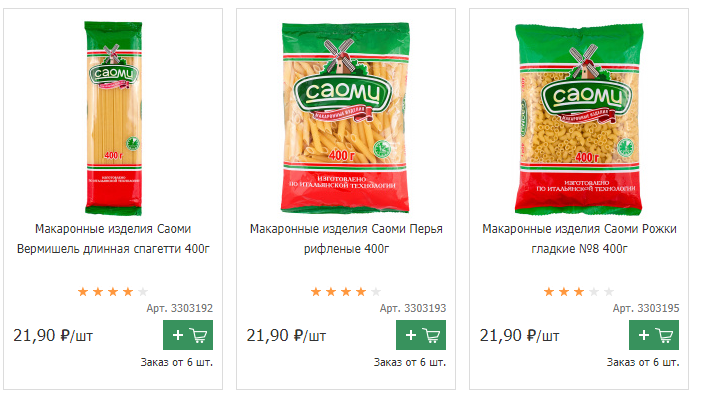
In the Utkonos online store, pasta is sold from 6 packs, inexpensive water - from 4 bottles - Sell products in bundles
Bundle low-margin products with each other or with medium to high-margin products. For example, fall protection for a child riding a bicycle can be sold separately, or you can assemble a set of helmet + elbow pads + knee pads + gloves. Or in a furniture store, you can immediately add interior filling or other elements to the wardrobe, as they do in Ikea. 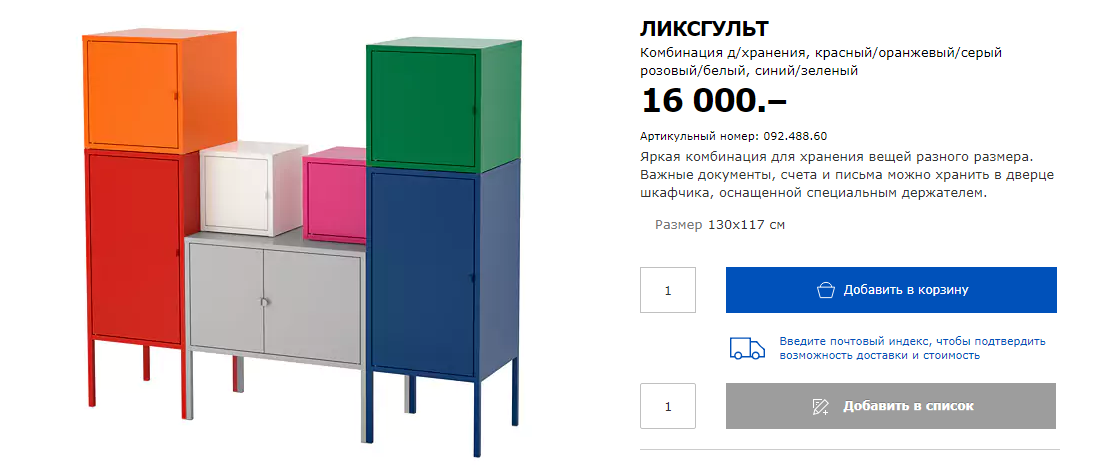
|
